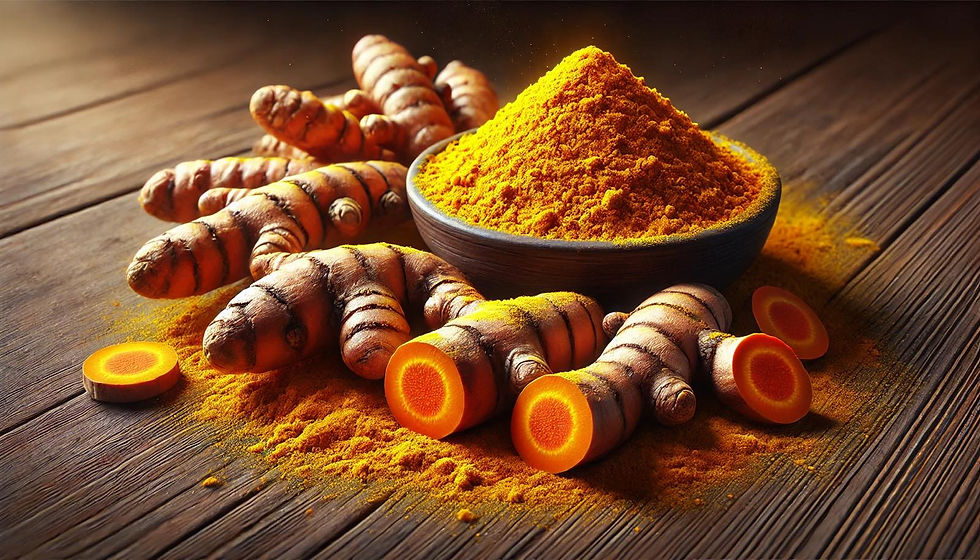Thai Herbs and Spices: Essential Ingredients in Thai Cooking
- THE SHARPENER
- Feb 25
- 4 min read

As an expat in Thailand, you've likely already fallen in love with the vibrant flavors and aromatic dishes that define Thai cuisine. The secret behind these tantalizing tastes lies in the unique blend of herbs and spices that form the backbone of Thai cooking. Understanding these ingredients is not just about appreciating your food; it's about immersing yourself in Thai culture and making the most of your culinary adventures in the Land of Smiles.
Imagine strolling through a bustling Thai market, the air thick with the fragrance of lemongrass, basil, and galangal. Each stall offers a rainbow of fresh produce, dried spices, and aromatic herbs that might seem unfamiliar at first glance. But fear not! This guide will walk you through the essential herbs and spices that make Thai food so irresistible, helping you navigate local markets, understand restaurant menus, and perhaps even inspire you to try your hand at Thai cooking in your own kitchen.
By familiarizing yourself with these key ingredients, you'll gain a deeper appreciation for the complexity of Thai flavors and the cultural significance behind each dish. You'll be able to order with confidence, cook with authenticity, and impress your Thai friends with your culinary knowledge. Let's embark on this flavorful journey together, exploring the aromatic world of Thai herbs and spices that will transform your expat experience from mere observation to full participation in Thailand's rich gastronomic tapestry.
The Foundations of Flavor
Lemongrass: The Citrusy Staple

Lemongrass, or "takrai" in Thai, is a ubiquitous herb in Thai cuisine, recognizable by its long, pale green stalks. Its citrusy, slightly sweet aroma is essential in many Thai soups, curries, and stir-fries. As an expat, you'll encounter lemongrass in famous dishes like Tom Yum soup and green curry. When cooking with lemongrass, use only the bottom third of the stalk, bruising it to release its oils before adding it to your dish.
Kaffir Lime Leaves: The Aromatic Accent
Known as "bai makrut" in Thai, kaffir lime leaves add a distinctive citrusy and floral note to many Thai dishes. These dark green, glossy leaves are often used in curries, soups, and stir-fries. They're typically added whole to infuse flavor during cooking and removed before serving. As you explore Thai markets, look for fresh kaffir lime leaves – their intense aroma is a sign of freshness.
Galangal: Ginger's Spicier Cousin
Often mistaken for ginger, galangal (or "kha" in Thai) has a sharper, more peppery flavor. This rhizome is crucial in many Thai soups and curries, particularly in the famous Tom Kha Gai (coconut chicken soup). When shopping, look for firm, smooth-skinned galangal. It's usually sliced thinly or pounded into curry pastes. Remember, it's not meant to be eaten whole – its purpose is to infuse dishes with its unique flavor.
Spicing Things Up
Thai Chili Peppers: The Fiery Heart of Thai Cuisine

Thai cuisine is renowned for its heat, and Thai chili peppers (or "prik" in Thai) are the primary source. These small but potent peppers come in various types, from the milder prik chi fa to the intensely hot prik kee noo (bird's eye chili). As an expat, it's crucial to build your spice tolerance gradually. Start with milder dishes and work your way up. Remember, you can always ask for "mai phet" (not spicy) when ordering if you're sensitive to heat.
Turmeric: The Golden Spice
Turmeric, or "khamin" in Thai, is both a flavoring agent and a natural food coloring. Its earthy, slightly bitter taste is essential in many southern Thai dishes and curry pastes. Fresh turmeric root is widely available in Thai markets, but powdered turmeric is also commonly used. As an expat, you might notice turmeric in dishes like yellow curry or the southern specialty, Khua Kling.
Herbal Essentials
Thai Basil: Not Your Average Basil

Thai cuisine uses several varieties of basil, each with its unique flavor profile. The most common is Thai sweet basil (horapa), which has a distinctive anise-like flavor. Holy basil (kaphrao) is another variety, with a peppery, clove-like taste often used in stir-fries. As an expat, learning to distinguish these basils will enhance your appreciation of Thai dishes and help you order more accurately in restaurants.
Coriander: From Root to Leaf
In Thai cooking, every part of the coriander plant is used. The leaves (cilantro) are used as a garnish, the roots are pounded into curry pastes, and the seeds are used both whole and ground. Known as "phak chi" in Thai, coriander is an essential flavor in many dishes. If you're not a fan of cilantro, be prepared to ask for dishes without it, as it's a common garnish.
Embracing the Flavors
As an expat in Thailand, understanding these herbs and spices is key to fully appreciating the local cuisine. Don't be afraid to ask questions at markets or in restaurants – most Thais are delighted to share their culinary knowledge. Consider taking a Thai cooking class to learn how to use these ingredients yourself. Not only will this deepen your appreciation for Thai food, but it will also provide you with a valuable skill to impress friends and family back home.
Remember, Thai cuisine is all about balance – sweet, sour, salty, and spicy flavors working in harmony. As you become more familiar with these essential herbs and spices, you'll start to recognize how they contribute to this balance in different dishes.
Embracing Thai herbs and spices is more than just a culinary adventure; it's a gateway to understanding Thai culture. Food is an integral part of social life in Thailand, and your newfound knowledge will help you connect more deeply with locals and fellow expats alike. So next time you're at a Thai market or ordering in a local restaurant, take a moment to appreciate the complex flavors and aromas around you. Your expat experience in Thailand will be all the richer for it.
.png)

Comments